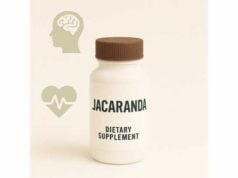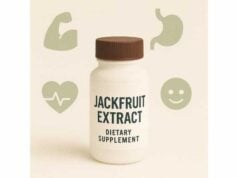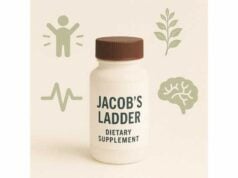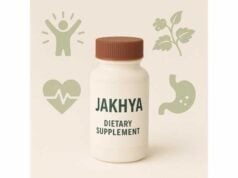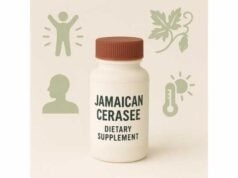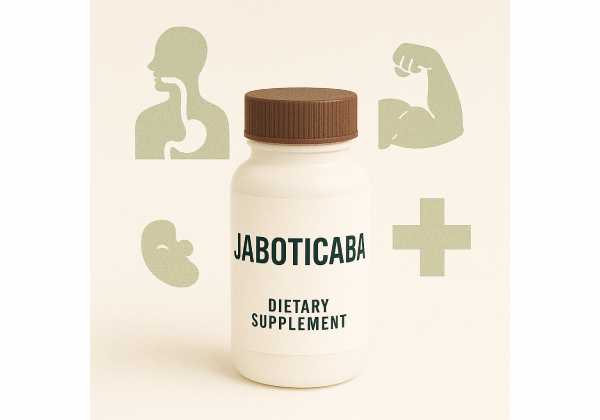
Jaboticaba (Plinia jaboticaba and related Plinia/Myrciaria species), often called the “Brazilian grape,” is a deep-purple, thin-skinned berry that grows directly from the trunk of its tree. Beyond its striking look, the fruit’s peel concentrates anthocyanins, ellagitannins, and a unique depside known as jaboticabin—bioactives studied for antioxidant, anti-inflammatory, and metabolic effects. At the table, jaboticaba is eaten fresh or as juice, jams, and wines; in research, its peels and pomace are transformed into powders and extracts to capture polyphenols that would otherwise be discarded. While many findings come from lab and animal studies, early human trials are emerging, especially around post-meal glucose handling and inflammation. This guide translates the science into everyday choices—how to use jaboticaba day to day, sensible serving ranges, what to expect (and not expect) from supplements, and who should be cautious. You will also find a practical review of side effects, quality signals on labels, and a clear summary of where evidence is strong versus still developing.
Quick Overview
- Peel-rich preparations provide concentrated anthocyanins and other polyphenols that support antioxidant and anti-inflammatory activity.
- Early human data suggest jaboticaba peel powder (about 15 g/day) may improve post-meal glucose and selected inflammatory markers.
- Practical intake: 80–150 g fresh fruit or 5–15 g peel powder daily with meals; start low and assess tolerance.
- Safety note: large amounts can cause digestive discomfort; avoid if you have kidney stones history or are on polyphenol-sensitive medications.
- Avoid frequent use of high-dose extracts in pregnancy, during breastfeeding, in children, and in those with significant GI or liver disease without medical advice.
Table of Contents
- What is jaboticaba and why it matters
- What are the key benefits
- How to use jaboticaba day to day
- How much jaboticaba per day
- Risks, side effects, and who should avoid
- What the evidence says today
What is jaboticaba and why it matters
Jaboticaba is the fruit of several closely related Atlantic Forest trees (most commonly Plinia jaboticaba and Plinia cauliflora). The berries ripen to a glossy purple-black and can cover the trunk and large branches in tight clusters—a botanical trait called cauliflory. People typically bite through the thin peel to reach a sweet, gelatinous pulp that surrounds one to four seeds. Unlike many fruits where the pulp holds most of the value, jaboticaba’s peel is the biochemical hotspot: it concentrates anthocyanins (the pigments that give the deep purple color), ellagic acid derivatives, proanthocyanidins, and the depside jaboticabin. These compounds are central to the fruit’s research appeal, given their roles in neutralizing reactive species, modulating inflammatory signaling, and interacting with carbohydrate and lipid metabolism.
From a sustainability perspective, peels and pomace (what remains after juicing) were once waste streams. Today they are milled into “peel flours” or standardized extracts for use in foods, beverages, and cosmetics. This shift reduces waste and raises polyphenol density in products. Processing matters, though. Heat, storage time, and extraction methods change the final anthocyanin profile; for example, prolonged storage of juice can significantly reduce cyanidin glycosides. For home use, that simply means fresher is better and gentle handling helps preserve color and potency.
Culturally, jaboticaba is woven into Brazilian foodways—consumed fresh at harvest, made into liqueurs, or simmered into jams that keep its aromatic tart-sweet signature. Health interest spans from traditional uses (e.g., soothing throat preparations) to contemporary research on peel powder for metabolic wellness. While “superfruit” headlines can overpromise, jaboticaba is a legitimate source of bioactive polyphenols plus fiber, especially when you include the peel. Understanding that the strongest evidence so far emphasizes peel-rich forms can help you make more effective choices—choosing whole fruit, not just filtered juice; adding a spoon of peel powder to yogurt; or trying a kitchen recipe that blends the skins into smoothies rather than discarding them.
The bottom line: jaboticaba matters because it combines culinary enjoyment with a distinctive polyphenol profile, strong sustainability potential in upcycled peels, and a growing (though still young) human evidence base.
What are the key benefits
When people ask about jaboticaba’s “benefits,” they are usually thinking about three domains: metabolic health, inflammation and oxidative stress, and gut health. The center of gravity for all three is the peel, where anthocyanins and ellagitannins cluster alongside dietary fiber.
Metabolic support around meals. Early clinical work using peel powder has reported improvements in postprandial (after-meal) glucose responses and selected inflammatory markers in adults with metabolic syndrome. This aligns with a broader nutrition pattern: polyphenol- and fiber-rich foods can slow carbohydrate absorption, dampen glycemic excursions, and modulate key cytokines. In practical terms, pairing a carbohydrate-rich breakfast or lunch with a modest portion of peel powder or whole fruit that includes peel may smooth the glucose curve for some people. While fasting glucose or A1C changes may require larger, longer trials to demonstrate, postprandial comfort and energy stability are relevant day-to-day wins.
Antioxidant and anti-inflammatory activity. Anthocyanins such as cyanidin-3-glucoside, plus ellagic acid derivatives and jaboticabin, help quench reactive oxygen species and influence transcription factors that regulate inflammatory cascades. These effects have been demonstrated most robustly in vitro and in animal models, with human confirmation emerging. Even without over-interpreting bench research, it is reasonable to view jaboticaba peel as one of several deeply colored fruit options (alongside blackberries, blueberries, and purple grapes) that collectively raise the polyphenol density of a diet. For people who prefer a Brazilian flavor profile, jaboticaba offers a culturally familiar route to the same general objective.
Gut-microbiome interactions. Polyphenols that are not fully absorbed in the small intestine reach the colon, where microbes transform them into smaller phenolic acids that can be reabsorbed and act systemically. Fiber from peel flours acts as a substrate for fermentation, potentially supporting a more diverse and resilient microbiota. Preclinical studies suggest jaboticaba can shift microbial composition in ways consistent with improved metabolic signaling. Translating this to daily life, adding a tablespoon of peel powder to yogurt or oatmeal delivers both polyphenols and fermentable fiber in one spoonful.
Cardiometabolic markers beyond glucose. In animal models, jaboticaba extracts have influenced lipid profiles and liver enzymes. Human data are limited and mixed. If you are aiming to improve LDL-C or triglycerides, jaboticaba can be part of a pattern that emphasizes viscous fibers, unsaturated fats, and reduced refined carbohydrates, but it should not be used as a single “fix.” Think of it as an enhancer of an already sound pattern rather than a stand-alone therapy.
Skin and oral wellness niches. Cosmetic interest stems from the peel’s antioxidant profile and color. Topicals aim to defend against environmental stressors. For oral health, increased polyphenol intake through whole fruit and peel may support a friendlier oral environment indirectly by modulating microbial communities and salivary antioxidant capacity. These uses are ancillary; they do not replace sunscreen, brushing, or flossing.
Overall, the most grounded benefits today emphasize meal-time metabolic support and inflammation modulation through peel-rich forms. Enjoying the fruit whole, reducing processing that strips the peel, and using upcycled peel flours are simple ways to capture more of what gives jaboticaba its scientific interest.
How to use jaboticaba day to day
The best way to use jaboticaba depends on what you have access to—fresh fruit in season, frozen pulp, juice, or peel powder. Because bioactives cluster in the peel, forms that retain or reintroduce peel will generally deliver more polyphenols per bite.
At home with fresh fruit. Eat jaboticaba whole when possible, gently biting through the thin peel and swallowing both peel and pulp. If the seeds are large and bitter, spit them out, but keep the skins. A small bowl (roughly a handful) with breakfast adds color and a modest fiber boost without crowding out other foods. For smoothies, blend whole berries with yogurt, oats, and water or milk; avoid straining, which discards the peel. If you make jam, use recipes that include macerated peel and limit high-temperature boiling to preserve anthocyanins. Quick, low-sugar fridge jams are kinder to pigments than long, high-heat canning.
Peel powder and “peel flours.” Upcycled peel powders offer a convenient, shelf-stable way to raise polyphenol density in a meal. Stir 1–2 teaspoons (about 3–6 g) into yogurt, overnight oats, or pancake batter; bake into muffins; or blend into smoothies. If you want to approach the amounts used in research, 1 tablespoon (~7–8 g) twice daily with meals is a practical ceiling for most adults who tolerate it well. Always start low and step up over one to two weeks, watching digestion.
Juice, wine, and vinegar. Clear, filtered juices are enjoyable but often strip away the peel. If juice is your preference, choose products that indicate inclusion of peel or “whole fruit” pressing and drink them fresh; prolonged storage, heat, and air exposure degrade anthocyanins. Homemade “whole-berry” blending followed by brief simmering for safety can strike a balance between flavor and color retention. Fermented options (wines, vinegars) provide unique flavors; keep in mind that anthocyanin content can fall during processing. Use these for enjoyment rather than functional dosing.
Pairing strategies. Combine jaboticaba with foods that complement its tart-sweet profile and add metabolic advantages. Pair with nuts or seeds (almonds, chia) to slow gastric emptying; add a protein like yogurt or cottage cheese to reduce the glycemic load of a meal; or mix with oats for a fiber synergy. Culinary acids (lemon juice) and cold temperatures help maintain color if you are serving fresh preparations.
Storage and prep tips. Handle berries gently to avoid rupturing skins. Refrigerate promptly and use within a few days. For longer storage, freeze whole berries on a tray, then bag and keep for up to several months. When drying peels at home for a DIY “peel flour,” use low temperatures and brief times to protect pigments; grind small batches and store airtight away from heat and light.
Who benefits most from day-to-day use. People looking to add a culturally familiar, polyphenol-dense fruit to a Mediterranean-style or plant-forward pattern; those seeking support for post-meal comfort within a broader lifestyle plan; and home cooks who enjoy upcycling peels into colorful, flavorful add-ins.
The theme: keep the peel, use gentle techniques, and pair jaboticaba with protein and fiber for a satisfying, balanced plate.
How much jaboticaba per day
There is no official recommended daily allowance for jaboticaba, but you can set sensible ranges by combining culinary norms with research-style amounts used for peel powders. Your choice depends on your goals, tolerance, and what form you use.
If you eat the whole fruit. A practical, food-first range is 80–150 g fresh jaboticaba per day (roughly a generous handful), consumed with the peel. This fits easily into a fruit allowance alongside other produce, delivers color and fiber, and avoids large swings in sugar intake. For most adults, this range offers variety without crowding out other nutrient-dense options.
If you use peel powder. Because peels are polyphenol-dense, you need less by weight. A realistic range is 5–15 g per day, split with meals. At the higher end of that range, some people notice digestive changes (looser stools or bloating) due to fiber and tannins. Starting with 3–5 g daily for a week, then titrating by 2–3 g increments, helps you find a comfortable personal dose.
If you are targeting post-meal glucose comfort. Place peel powder where it matters most—at the meals that typically cause sleepiness or cravings later. For example, 5–7 g stirred into a breakfast yogurt bowl or blended into a smoothie taken with lunch. Pairing with protein, healthy fats, and viscous fibers (chia, oats) enhances the glucose-steadying effect.
For training and recovery days. If you train intensely, you might favor polyphenols after hard sessions, but avoid mega-doses that blunt adaptations. A small serving of whole jaboticaba or 3–6 g peel powder as part of a mixed meal is reasonable. If you prefer to periodize, focus peel-rich servings on rest days or easy sessions.
Upper limits and special cases. There is no established tolerable upper intake level for jaboticaba, but very large servings of polyphenol-dense peel can provoke GI discomfort or, rarely, interfere with iron absorption when taken alongside iron-rich meals in susceptible individuals. People with a history of kidney stones may choose the lower end of the range or alternate with other fruits to limit concentrated oxalate exposures from certain plant foods, though jaboticaba’s specific oxalate profile is not well characterized.
Children, pregnancy, and breastfeeding. Whole fruit as part of a normal, varied diet is generally acceptable unless an allergy is present. High-dose peel extracts and concentrated supplements should be avoided without clinician guidance. When in doubt, treat peel powders like any concentrated botanical—start cautiously or wait for individualized advice.
In short, let everyday food lead: a handful of whole fruit with the peel, or a spoonful of peel powder with meals. Build up slowly, monitor how you feel, and keep variety in your fruit rotation.
Risks, side effects, and who should avoid
Jaboticaba is generally well tolerated as a food, especially when eaten as whole fruit within typical portions. Side effects are more likely with concentrated peel powders or extracts, or when consuming large amounts quickly. Knowing what to look for—and when to hold back—helps you enjoy the fruit safely.
Common, usually mild effects. The peel’s tannins and fiber can cause a sense of fullness, mild nausea, gas, or looser stools, especially if you jump straight to larger spoonfuls of peel powder. These usually settle with dose reduction, slower titration, and ensuring you drink water with peel-rich meals. If you are sensitive to astringent foods (e.g., strong black tea), you might notice similar sensations with jaboticaba peel.
Allergies and oral reactions. Fruit allergies are uncommon but possible. Watch for itching in the mouth, lips, or throat, swelling, or hives after eating the fruit. Anyone with a known allergy to other Myrtaceae family fruits should be cautious. Stop use and seek care if symptoms arise.
Medication and nutrient considerations. Polyphenol-rich foods can theoretically interact with the absorption of certain medications taken at the same time (for example, iron or some antibiotics), although typical food-level servings are unlikely to cause significant changes. As a general rule, take critical medicines with plain water and separate from concentrated peel powders by several hours. If you take anticoagulants or antiplatelet drugs, discuss any plan to use high-dose botanical extracts with your clinician. For people managing iron-deficiency anemia, avoid pairing iron supplementation with high-tannin peel powder in the same meal.
GI and liver conditions. People with active inflammatory bowel disease flares, severe IBS, or a history of polyphenol-sensitive dyspepsia can react to concentrated extracts. Start with whole fruit; if symptoms occur, reduce dose or choose alternative fruits. Those with active liver disease should avoid high-dose, non-standardized extracts and stick to food-level servings unless advised otherwise by a specialist.
Kidney stone history. While jaboticaba’s oxalate data are limited, a prudent approach in stone formers is moderation and variety—rotate fruits and avoid relying on a single high-polyphenol powder day after day.
Pregnancy, breastfeeding, and children. Whole jaboticaba as part of a balanced diet is generally reasonable. Avoid concentrated extracts and high-dose peel powders during pregnancy and breastfeeding unless recommended by a clinician. Children should consume age-appropriate portions of whole fruit; skip concentrated supplements.
Quality control concerns. Supplements vary widely. Choose products that disclose the botanical name (Plinia jaboticaba or Plinia cauliflora), part used (peel), extraction method, and polyphenol content per serving. Be wary of proprietary blends that do not quantify active compounds, exaggerated “fat-burning” claims, or attempts to position jaboticaba as a cure for specific diseases. Food safety basics still apply: if you ferment or can at home, follow reliable procedures.
The best safeguard is to treat jaboticaba like any richly pigmented fruit—enjoy it in sensible amounts, escalate slowly with peel powders, and keep your healthcare team in the loop if you have conditions that affect digestion, liver function, or medication use.
What the evidence says today
Evidence on jaboticaba spans chemistry, processing, preclinical biology, and—more recently—human outcomes. Understanding the pattern helps set expectations and guide smart use.
What is well described. Comprehensive reviews agree that jaboticaba peels are rich in anthocyanins (often dominated by cyanidin glycosides), ellagic acid derivatives, proanthocyanidins, and the depside jaboticabin. Processing conditions—temperature, solvent, oxygen exposure, and storage time—can preserve or degrade these molecules. Modern extraction studies compare gentle, water-based methods to hydroethanolic systems and track yields of specific compounds. This lab-to-kitchen thread explains why fresh, minimally processed preparations tend to preserve color and why upcycled peel flours can deliver more polyphenols per gram than juice or pulp alone.
Where preclinical signals point. In vitro and animal models consistently show antioxidant and anti-inflammatory effects, modulation of carbohydrate and lipid pathways, and beneficial shifts in gut microbial composition when peel-rich extracts are provided. Some work has explored jaboticabin’s anti-inflammatory potential in respiratory models, broadening interest beyond metabolism. These findings justify the move to human trials but, on their own, do not prove clinical benefit.
What early human studies suggest. Initial randomized trials using peel powder in adults with metabolic syndrome indicate improvements in post-meal glucose area-under-the-curve and selected inflammatory markers over several weeks, without large changes in weight or fasting lipids. That pattern is consistent with a “meal-time modulator” rather than a stand-alone treatment. It also matches the day-to-day approach of adding polyphenol-rich, fiber-containing foods at strategic times rather than chasing dramatic lab shifts.
What is not yet established. Long-term effects on hard outcomes (cardiovascular events, diabetes incidence), optimal standardization of peel powders, and head-to-head comparisons with other anthocyanin-rich fruits are still open questions. Likewise, dosing remains practical rather than formal; many studies choose amounts that are feasible in food formats rather than pharmacologic concentrations. Safety data in pregnancy, lactation, and pediatrics are minimal, so the food-first, moderate-intake approach remains the default.
How to act on the evidence now. For most people, jaboticaba can be a flavorful way to raise dietary polyphenols and fiber, especially when the peel is included. If post-meal comfort is your focus, place a small, consistent dose with meals, track how you feel, and integrate it into an overall pattern that already controls refined carbohydrate load and includes regular movement. If you prefer supplements, choose transparent, peel-standardized products and avoid high-dose multi-plant blends promising medical outcomes.
Evidence is trending in an encouraging direction—particularly for peel-rich preparations and meal-time metabolism—yet still asks for patience. Enjoy the fruit, keep the peel, and treat concentrated products with the same respect you give any functional food: useful in context, not magical on their own.
References
- Jaboticaba berry: A comprehensive review on its polyphenol composition, health effects, metabolism, and the development of food products (2021) (Systematic Review)
- Jaboticaba peel improves postprandial glucose and inflammation: A randomized controlled trial in adults with metabolic syndrome (2024) (RCT)
- Extraction Methods, Chemical Characterization, and In Vitro Biological Activities of Plinia cauliflora (Mart.) Kausel Peels (2023)
- Myrciaria jaboticaba Fruit Peel: Bioactive Composition as Determined by Distinct Harvest Seasons and In Vitro Anti-Cancer Activity (2024)
- Jaboticabin and Related Polyphenols from Jaboticaba ( Myrciaria cauliflora) with Anti-inflammatory Activity for Chronic Obstructive Pulmonary Disease (2019)
Disclaimer
This article is for general education. It is not a substitute for personalized medical advice, diagnosis, or treatment. If you have chronic conditions, take prescription medications, are pregnant or breastfeeding, or plan to use concentrated peel powders or extracts, consult a qualified healthcare professional first. Whole fruit in moderate portions is typically safe; concentrated products should be selected carefully and used within a balanced diet.
If you found this guide helpful, please consider sharing it on Facebook, X (formerly Twitter), or your preferred platform, and follow us for future updates. Your support helps us continue producing careful, people-first health content.

